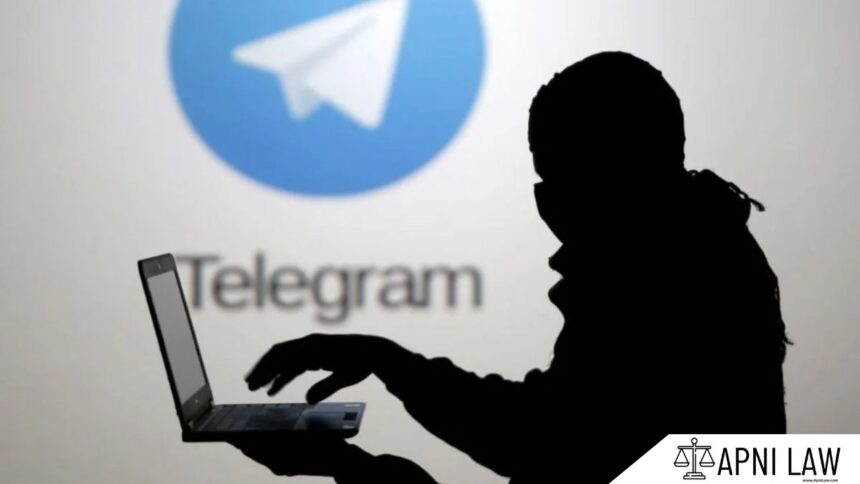Section 67B of the Information Technology Act, 2000, forms one of India’s most crucial legal safeguards against online child pornography. It criminalizes the publishing, transmission, and even browsing of material that depicts children in sexually explicit acts, whether real or simulated. This section was introduced to protect minors from sexual exploitation in the digital space and to ensure that technology does not become a tool for child abuse or trafficking. It represents the government’s commitment to preserving the dignity, privacy, and safety of children in cyberspace.
What Does Section 67B Prohibit?
Section 67B makes it a punishable offence to publish, transmit, or cause to be published or transmitted, in electronic form, any material that shows children in sexually explicit acts. The section covers a wide range of actions including creating, collecting, seeking, browsing, downloading, advertising, or distributing such material through the internet or any digital platform. The law defines “children” as individuals who have not completed 18 years of age.
The section not only punishes those who create or circulate such material but also targets those who intentionally access, view, or store it. Even searching for or clicking on child pornographic content can attract liability under this provision. The intention of the law is to disrupt the entire chain of online child sexual exploitation, from creation to consumption.
Who Can Be Punished Under Section 67B?
This section applies to every person involved at any stage of producing or distributing child pornographic content. It includes website administrators, social media users, content creators, file sharers, and even individuals who forward such content through messaging apps. The law makes no distinction between direct and indirect involvement. Even passive acts, such as browsing or downloading such material knowingly, are criminalized.
However, the law also recognizes exceptions. It exempts actions done for bona fide purposes such as law enforcement investigation, judicial proceedings, educational research, or scientific study. To claim this exemption, the act must be genuine and in the public interest. Any misuse of this clause can still lead to prosecution.
What Are the Punishments Under Section 67B?
The punishment under Section 67B is severe and reflects the seriousness of the crime. For a first conviction, the offender can be imprisoned for up to five years and fined up to ₹10 lakh. For a subsequent conviction, the imprisonment may extend to seven years with the same fine amount.
The law ensures that repeat offenders face enhanced penalties. Courts also impose additional conditions such as banning access to digital platforms or ordering counseling and rehabilitation programs. The punishment aims not only to deter offenders but also to promote awareness about digital ethics and the protection of minors.
How Does Section 67B Work Alongside Other Cyber Laws?
Section 67B operates in conjunction with other provisions of the Information Technology Act, such as Sections 67 and 67A. While Section 67 addresses the transmission of general obscene content, and Section 67A deals with sexually explicit acts involving adults, Section 67B focuses exclusively on children. This distinction ensures stricter treatment for offences involving minors.
The section also works in harmony with the Protection of Children from Sexual Offences (POCSO) Act, 2012, which criminalizes offline child sexual abuse. Together, these laws form a comprehensive framework that tackles both physical and digital forms of child exploitation.
Law enforcement agencies, including the Cyber Crime Cells and the Central Bureau of Investigation (CBI), use digital forensic tools to trace offenders, recover deleted data, and identify IP addresses associated with child pornographic material. The Information Technology (Intermediary Guidelines and Digital Media Ethics Code) Rules, 2021 further mandate social media platforms to remove such content promptly when reported.
How Do Courts Interpret Section 67B?
Indian courts have consistently treated offences under Section 67B as grave and intolerable. They have emphasized that the protection of children’s dignity and safety in the digital era is of paramount importance. In multiple judgments, courts have held that even viewing or storing child pornographic material intentionally is a serious crime, as it perpetuates demand for such content.
Courts have also clarified that the prosecution must prove the presence of “sexually explicit acts” involving minors in the electronic material. If the content does not meet the explicit criteria or if the accused lacked knowledge or intent, the charges may be dismissed. Judicial interpretation thus ensures that innocent users are not wrongfully implicated, while genuine offenders face strict punishment.
In State of Tamil Nadu v. M. Suresh Kumar, for example, the court upheld the conviction of an individual who had stored and transmitted child pornographic clips through his mobile device. The judgment highlighted that the mere possession of such content, when done knowingly, constitutes a criminal act under Section 67B.
What Are the Enforcement Challenges?
Despite strong legal provisions, enforcement remains complex due to the technological sophistication of offenders. Many use encrypted platforms, anonymous browsing, and dark web networks to hide their identity. This makes tracing and prosecuting them difficult.
Another challenge is the cross-border nature of cybercrime. Child pornography often originates or is hosted on servers outside India, making jurisdictional cooperation essential. To address this, India has strengthened its collaboration with international organizations such as INTERPOL and the National Centre for Missing and Exploited Children (NCMEC).
Law enforcement agencies also face difficulties in monitoring private messaging platforms that use end-to-end encryption. Balancing privacy rights with the need to combat child pornography is an ongoing legal and ethical debate.
What Role Do Intermediaries and Social Media Platforms Play?
Under Section 67C of the IT Act and the 2021 Rules, intermediaries such as internet service providers, search engines, and social media platforms are obligated to retain user data and report any child sexual abuse content they come across. Failure to comply can lead to loss of safe harbor protection and criminal liability.
Platforms like Facebook, Instagram, and X (formerly Twitter) are required to deploy AI-based monitoring systems to detect and block child sexual abuse material. They must also share details with the Indian Computer Emergency Response Team (CERT-In) and assist in criminal investigations.
The government frequently issues blocking orders to remove URLs, videos, and accounts involved in distributing such content. Public awareness campaigns and helplines have been launched to encourage citizens to report online child abuse.
How Does Section 67B Protect Children’s Rights?
Section 67B is designed to uphold the constitutional rights of children to dignity, privacy, and protection from exploitation. It recognizes that digital harm can be as damaging as physical abuse. By criminalizing every stage of online child pornography, from production to viewing, it aims to eliminate the market and discourage predators.
The provision reinforces India’s obligations under international treaties such as the UN Convention on the Rights of the Child and the Optional Protocol on the Sale of Children, Child Prostitution and Child Pornography. It aligns domestic law with global standards for child protection in cyberspace.
What Is the Legal Significance of Section 67B Today?
In the era of widespread internet access, Section 67B remains one of the most vital legal instruments for child protection online. Its scope extends beyond punishment, it also serves as a preventive tool by deterring individuals from engaging in or supporting digital child exploitation.
Courts, policymakers, and law enforcement authorities continue to rely on this section to prosecute offenders and regulate online behavior. Educational programs now include digital safety awareness to teach minors about responsible internet use and reporting mechanisms.
The growing digital landscape demands continuous reform, but Section 67B continues to stand as a cornerstone of India’s cybercrime framework, emphasizing that child safety in the virtual world is non-negotiable.
Conclusion
Section 67B of the Information Technology Act, 2000, plays a pivotal role in combating child pornography and safeguarding minors in cyberspace. It criminalizes all forms of sexual exploitation of children online, imposes strict punishment on offenders, and empowers authorities to remove and block illegal content. Despite challenges in enforcement due to technology and jurisdictional barriers, the provision ensures that the internet remains a safer space for children.
By combining punishment with awareness and international cooperation, India continues to strengthen its fight against online child sexual abuse. Section 67B thus represents not only a legal prohibition but also a moral and social commitment to protecting the innocence and dignity of every child.








